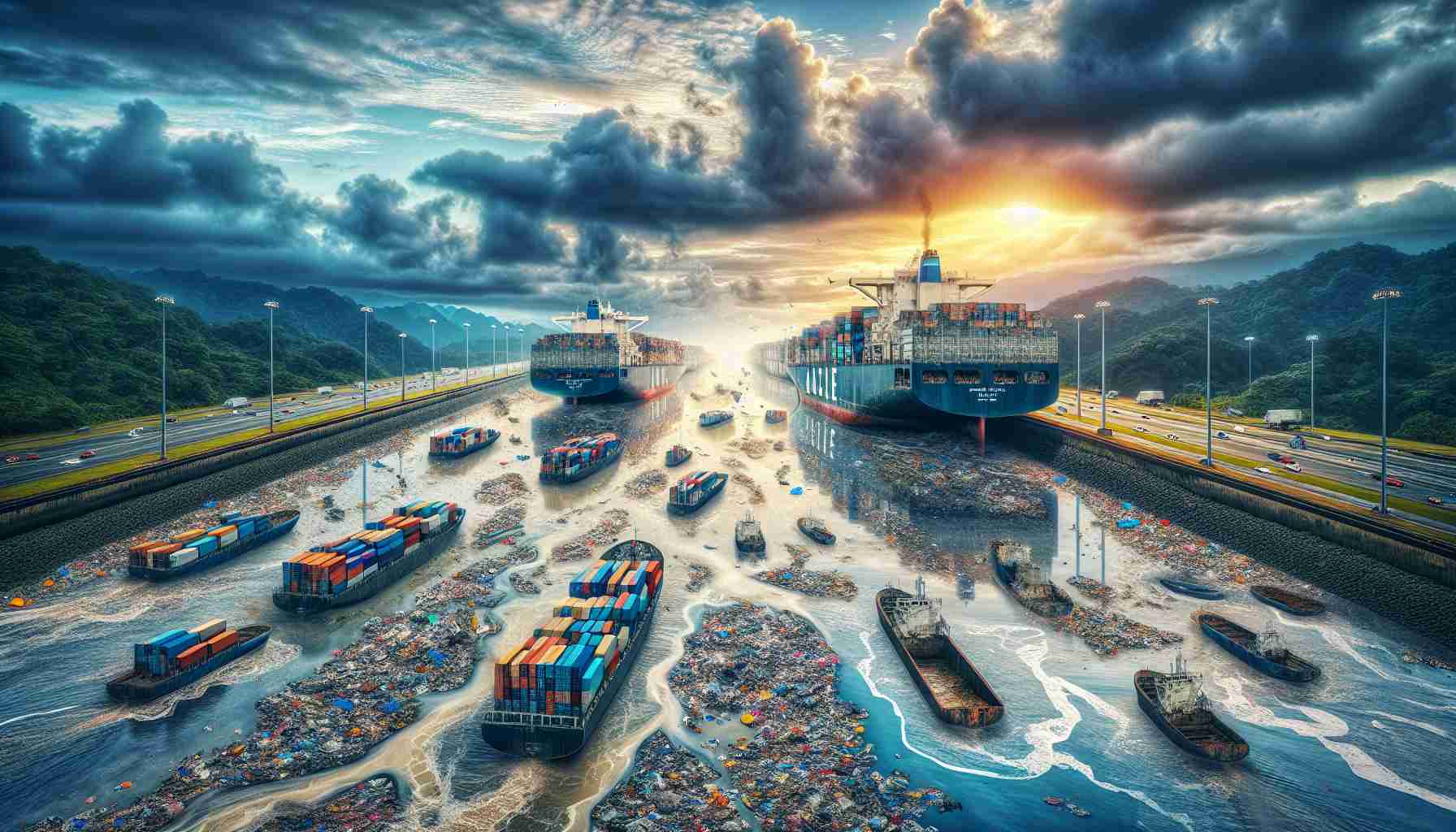The Looming Water Shortage
In 2023, while exploring the Panama Canal, I anticipated a typical narrative about its historic construction and significance. Instead, I encountered a palpable anxiety among locals relying on the canal for their jobs. Midway through Panama’s rainy season, the expected downpours were disappointingly scarce, leading to dangerously low water levels in the canal.
The guide shared a startling fact: the locks that facilitate passage require a staggering amount of freshwater, specifically from Lake Gatún. With diminishing rainfall and an increasing need for drinking water in the region, the canal’s operations face serious threats. Throughout recent years, the Panama Canal Authority has even imposed restrictions on ship transits, temporarily reducing traffic by up to 40%.
With climate change intensifying drought conditions, the canal’s future is uncertain. The ongoing drought of 2023-24 is one of the most severe on record, resulting in higher transit prices and significant delays for shipments, disrupting global trade routes and inflating consumer prices.
While some point fingers at foreign influences, such as China’s growing interest in the region, it is the environmental crisis stemming from climate change that poses the gravest risk to effective commerce through the canal. Stakeholders must urgently address these challenges to secure the canal’s operational integrity for the future.
The Panama Canal’s Water Crisis: Implications for Global Trade
Understanding the Water Shortage
As of 2023, the Panama Canal, a crucial conduit for international shipping, is facing a dire water shortage that stems from a combination of climate change and inadequate rainfall. This situation not only jeopardizes the canal’s operation but also implicates global trade dynamics.
Causes of the Shortage
The primary issue impacting the Panama Canal is the insufficient rainfall experienced during the rainy season. Normally, this period would replenish essential freshwater supplies from Lake Gatún, which is critical for the canal’s lock system that allows vessels to pass through. However, continuous drought conditions have resulted in alarmingly low water levels, prompting the Panama Canal Authority (PCA) to implement restrictions that have caused ship traffic to decline by up to 40%.
Features of the Panama Canal
1. Lock Systems: The canal employs an innovative lock system that raises and lowers ships to accommodate the elevation changes along its route. Each lock chamber uses about 26 million gallons of fresh water per transit.
2. Strategic Importance: The canal significantly reduces the travel distance for ships moving between the Atlantic and Pacific Oceans, making it a vital artery for global commerce.
3. Trade Impact: Approximately 12% of global trade passes through the Panama Canal, underscoring its critical role in the shipping industry.
Pros and Cons of Current Conditions
# Pros:
– Increased Awareness: The crisis has heightened awareness regarding climate change and its impact on essential infrastructure.
– Potential Innovations: There’s an opportunity for innovation in water management and alternative shipping routes.
# Cons:
– Economic Disruptions: Higher transit fees and delays have led to inflated consumer prices and disrupted supply chains.
– Job Losses: Local economies dependent on the canal are vulnerable, with potential job losses in the maritime sector looming.
Case Studies and Use Cases
Several shipping companies have reported significant delays in deliveries, prompting them to seek alternative routes or to change shipping schedules. For instance, companies that typically rely on the canal for efficient travel times are faced with longer journeys around South America, resulting in increased fuel consumption and costs.
Limitations and Speculations
With climate change anticipated to exacerbate such drought conditions, the future of the Panama Canal looks bleak unless immediate and effective measures are implemented. Stakeholders must consider investing in sustainable practices, improved water conservation strategies, and alternative infrastructure to mitigate the impacts of climate change.
Trends and Innovations
Recent trends indicate a growing interest in sustainable shipping practices. Companies are exploring eco-friendly vessels and alternative energy sources, which could ultimately shift maritime logistics towards a more sustainable model, lessening reliance on the canal.
Predictions for the Future
If the current trajectory of climate change continues, it is predicted that shipping companies may adjust their strategies to account for higher costs and longer travel times. Additionally, the canal may have to innovate in its operations, possibly even revising its infrastructure to enhance water retention and management.
Conclusion
The plight of the Panama Canal serves as a microcosm of the broader struggles posed by climate change, highlighting urgent needs for adaptation in critical infrastructure. As the situation unfolds, the global shipping community and local stakeholders must collaborate on sustainable solutions to ensure the canal’s functionality for future generations.
For more details on global shipping trends, visit Shipping.org.


